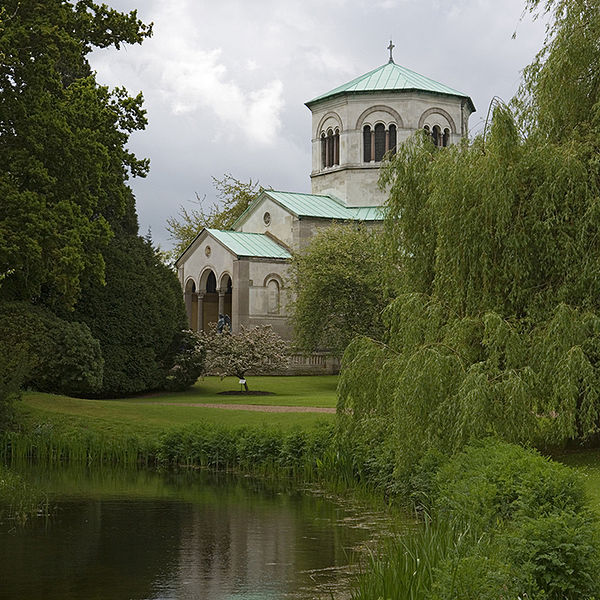
Queen Victoria’s love for her husband Prince Albert is well known and when he died on 14th December 1861, of typhoid, she was devastated. Within four days she had ordered the Frogmore Mausoleum to be built at her own expense in the gardens of Frogmore House. The Mausoleum was to contain his human remains, and to be her future resting place next to him.
The Royal Mausoleum is a remarkable example of Victorian building, sumptuously decorated inside with inlays of coloured marbles from the UK, Italy, Greece, France, Portugal (Emperor’s Red), Africa and North America.
The walls are predominantly in the Portuguese red marble, a gift from the King of Portugal, a cousin of both Victoria and Albert, with the inlays in the other marbles from around the world.
The external walls are of granite from Aberdeen and Mull in Scotland, and Devon, Cornwall and Guernsey alongside Portland Stone. The roof is Australian copper.

At the entrance stand two bronze statues of angels bearing a sword and a trumpet, by Georg Howaldt of Brunswick and dating from 1878. In the centre above the archway is a terra cotta medallion of the head of Christ, a gift of the Princess Royal, the Crown Princess of Prussia.
After Victoria’s death, the new king, Edward VII, put in hand new stained glass windows, interior repainting of the dome, and presented the large bronze lamps at the entrance.1
I carried out investigative work here.
1 Credit – http://www.thamesweb.co.uk/windsor/frogmore/frogmore.html
View Larger Map












No comments yet. Be the first!